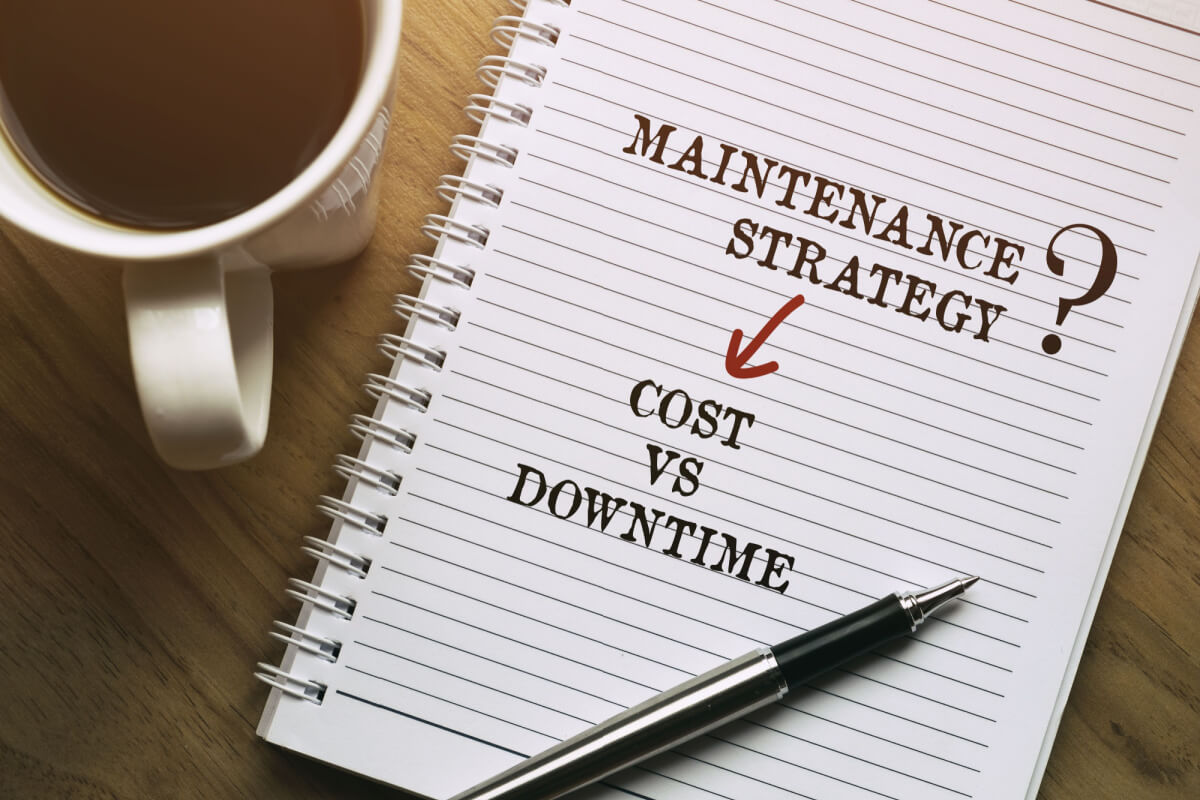Table of Contents
An unexpected network or system outage may be unusual, but it is also inevitable. Even industry giants occasionally experience painful downtime.
Case in point, Apple had a 12-hour outage in 2015 that cost the company $25 million. Similarly, a five-hour outage in a Delta Airlines operation center caused a $150 million loss in revenue and 2,000 canceled flights.
Information technology (IT) downtime is a big deal; it drains revenue and weakens customer loyalty and trust.
This post explores the true cost of downtime in IT. It also presents ways to mitigate loss, such as IT support outsourcing.
The Average Cost of IT Downtime

The cost of IT downtime can range from $5,600 per minute to $9,000 per minute based on industry vertical and company size. The total cost varies from one company to another. In 2021, for example, an hour of downtime cost Amazon $34 million in sales. On the other hand, Facebook’s income dropped by $100 million because of an extended outage.
Another study shows that a quarter of respondents noted a $301,000 to $400,000 revenue loss from one hour of downtime. For small and midsize businesses (SMBs), average downtime costs range from $137 to $427 per minute. Although the total size of the loss is smaller, it’s exactly such losses that, for a small- to medium-sized business (SMB), can be its death knell.
The numbers that the research firms emphasized are only averages relative to revenue and industry. Still, they are no laughing matter. Recent data from Uptime Institute’s 2022 Outage Analysis Report showed that downtime costs continue to rise.
- Fifteen percent (15%) of downtime cost companies over $1 million, an 11% increase from 2019.
- More than 60% of downtime costs over $100,000, indicating a 39% increase from three years ago.
The more frequently an organization experiences downtime, the higher the cost. Businesses with frequent downtime have 16 times more costs. Additionally, the risks increase based on your industry. High-risk industries include the following:
- Media and communications
- Banking and finance
- Manufacturing
- Healthcare
- Government
Factors That Contribute to the Cost of Downtime
Now that you know the average cost of IT downtime, let’s look at the factors contributing to this number.
Note that we are referring to unplanned downtime. While planned outages are costly, this article focuses on the cost and stress of unexpected network or server failure.
The cost of unplanned downtime varies depending on the following factors:
Organization Size
It is no surprise that bigger organizations have greater downtime costs. Picture an enterprise with thousands of employees. Lost revenue is one thing, but the effects of reduced productivity and the salaries owed to idle staff would be massive.
SMBs suffer from unexpected outages, too. But the cost of unforeseen downtime and recovery is far greater for larger organizations. Hence, businesses of all sizes tap into outsourced IT solutions to reduce downtime costs.
Industry Vertical
The industry you are a part of plays a huge part in the significance of downtime to your business. As mentioned, industries with the highest risk of system downtime are government, communications, banking, insurance, healthcare, and technology.
The risk is lower for the education, retail, and construction industries. Even for these areas, even though downtime can be a headache, it is less costly.
Business Model
More companies depend on online services. How much your operation relies on online services is crucial to determining the risk and implications of unforeseen downtime.
Suppose you are an e-commerce brand that conducts business purely online. In that case, there is a higher risk of network issues than there is for a traditional brick-and-mortar store. The level of risk decreases if you outsource data entry services and IT support.
Calculating the Cost of Downtime

Calculating system and network failure costs requires using one of many equations to get a rough estimate. But before that, we must identify which cost we want to calculate.
The cost of IT downtime reflects more than lost revenue. Data loss, recovery costs, brand reputation, and reduced productivity are other factors to consider. Each aspect is important, especially considering the challenge of recovering lost data and dealing with unhappy customers. You can soften the blow with back-office outsourcing.
Determining intangible costs, such as employee stress and reputational damage, is more difficult. You cannot easily represent such a loss in numbers. In contrast, measuring outage costs via productivity rate or the dollar sign is easier to manage.
Calculating the cost in terms of lost revenue requires the following formula:
| Downtime costs = minutes of downtime x cost per minute |
Use the above reports to estimate your likely cost per minute. A small business would have a $427 cost per minute, while a large enterprise would incur a $5,600 expense. You can refer to this formula to find the hourly cost of downtime.
Determining productivity losses is more straightforward with this formula:
| Productivity costs = number of staff affected by x hourly rate |
Other Negative Impacts of IT Downtime
You can look at outsourced IT trends and know that downtime affects multiple aspects of your business, contributing to your overall cost. The most significant impacts are on reputation, productivity, data, and revenue. Other implications are even more damaging.
Research from Ponemon states that IT downtime leads to business disruption, which includes customer churn and reputational damage. Revenue loss comes second in terms of impact, and end-user productivity is the third-highest pain point.
For software providers, government fines for potential breaches of regulatory requirements, settlements, litigation, and service-level agreement (SLA) financial penalties are serious revenue drains. For businesses handling physical goods, depleted inventory is another large costly risk.
Adding to all these are equipment replacement costs, contractor costs, employee retention issues, and productivity problems. After all, disruptions cause stress, leading to unhappy workers. Unsatisfied staff members tend to leave.
IDC’s Worldwide State of Data Protection and Disaster Recovery Survey also reports the following findings:
- Almost half of data disruptions lead to lost productivity.
- Forty-three percent (43%) of companies encounter data loss due to outages.
- More than 30% of disruptions result in a direct loss of revenue.
- About 40% of outages damage brand reputation and image.
- Half of the server failures cause staff to work overtime, further decreasing the bottom line.
How Common Is Downtime?

According to Uptime Institute’s survey, 80% of data center operators and managers encountered at least one downtime in the past three years. Forrester’s Cost of Planned and Unplanned Downtime Report also discovered that 41% of companies experience unplanned downtime every week or month.
But not all downtime is the same. Severity also matters. The same survey from Uptime Institute said that 20% of organizations reported severe outages in the past three years that hurt their compliance adherence, reputation, and revenue.
System downtime occurs in every business; hence, having a robust recovery plan is crucial. Back-office outsourcing services can help you with this.
How To Avoid Downtime
Avoid unforeseen downtime by establishing backup systems (in case anything goes awry) and predicting and preventing system failure. Here are some steps to follow to reduce the impact of unplanned shortages.
Regularly Test Server Backups
You can reduce damage by getting servers back online immediately after they crash. If all else fails, you can restore a backup. Regularly test server backups to ensure you can restore pertinent business data even in the worst case.
Check Your Facilities
Physical and digital dangers pose a risk to your infrastructure. Fires, water damage, critters chewing through cables, and clumsy employees can each cause technical mayhem.
Conduct weekly maintenance checks to ensure everything is in good shape. Also, look for obvious hazards such as physical damage to equipment, loose cables, air flow blockages, or an overly hot server room that can pose a hardware risk.
Monitor Your Devices
How do you know when a server is about to fail? Outsourced tech solutions come in handy when monitoring equipment health to avoid potential red flags.
Your service provider can alert you when the memory usage or CPU is high or when a server suddenly reboots. Network monitoring tools offer an added layer of protection, so you can rest easy.
Update Devices Regularly
Maintain device security, health, and stability by installing patches and updating operating systems, applications, and hardware. You can do this regularly. Remember that scheduled server maintenance requires downtime, which can affect users. Take special precautions before a planned update.
Leverage Outsourcing
What is an outsourced IT provider’s role in preventing downtime? When you outsource the maintenance and monitoring of your IT system, you can rest assured that the service provider can detect potential downtime before it leads to consequences.
Business process outsourcing (BPO) providers can identify and resolve issues before your team encounters difficulties and loses productivity. This boosts your bottom line and saves you money. A proactive, outsourced IT solution significantly reduces downtime.
The Bottom Line
IT downtime not only affects companies financially, but it also affects productivity, employee satisfaction, reputation, and data integrity. Although outages are inevitable, you can minimize their frequency and impact.
Taking the initiative to prepare for possible system failures makes a significant difference. Establish contingency plans, conduct regular testing, and use outsourcing to avoid costly mishaps.
When systems crash, the best way to get back up is with the help of a reliable BPO provider such as Unity Communications. We help companies save millions, keep employee morale high, and secure a positive reputation by preventing IT mayhem.
Chat with us now to learn how we can help.



